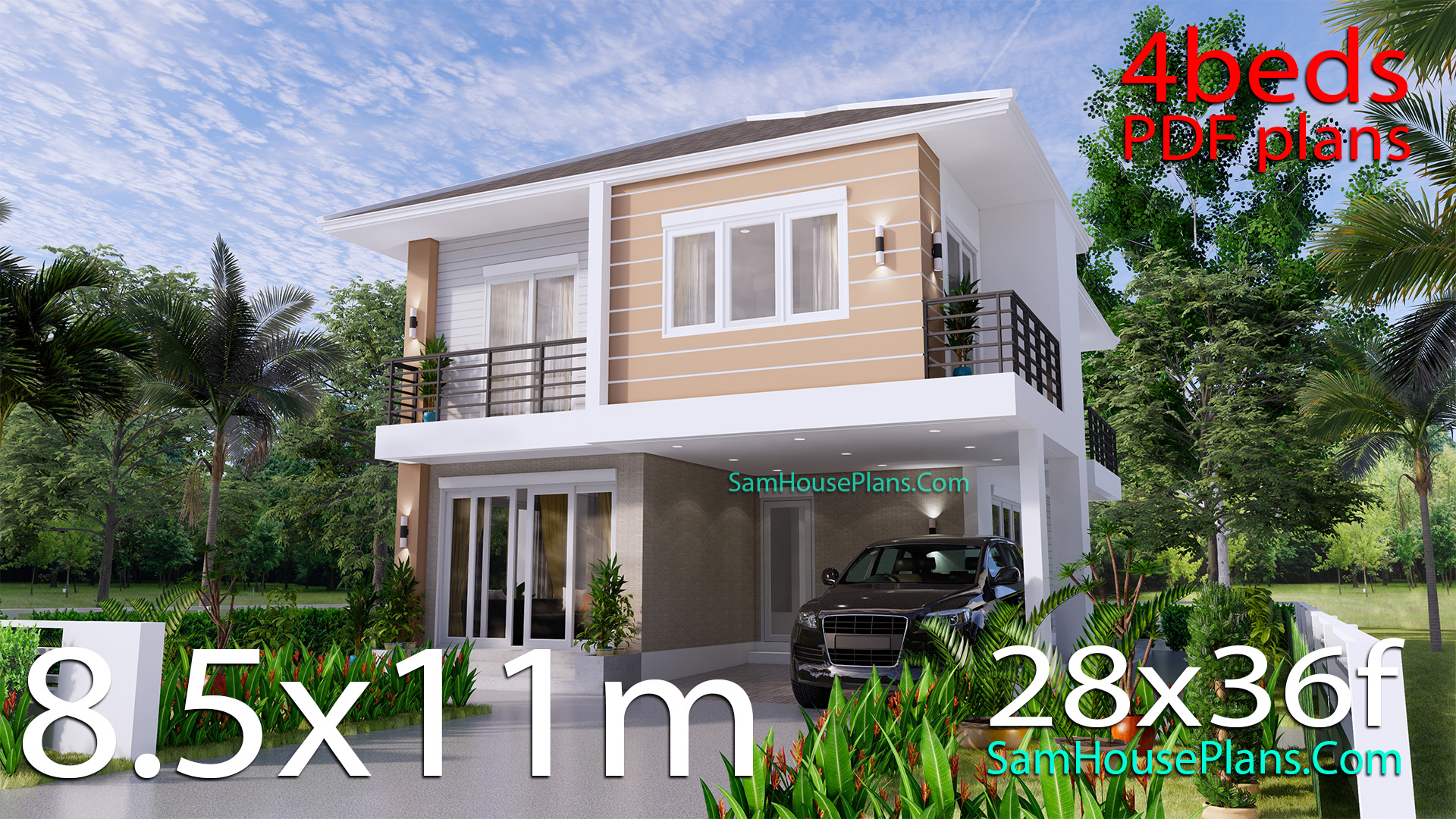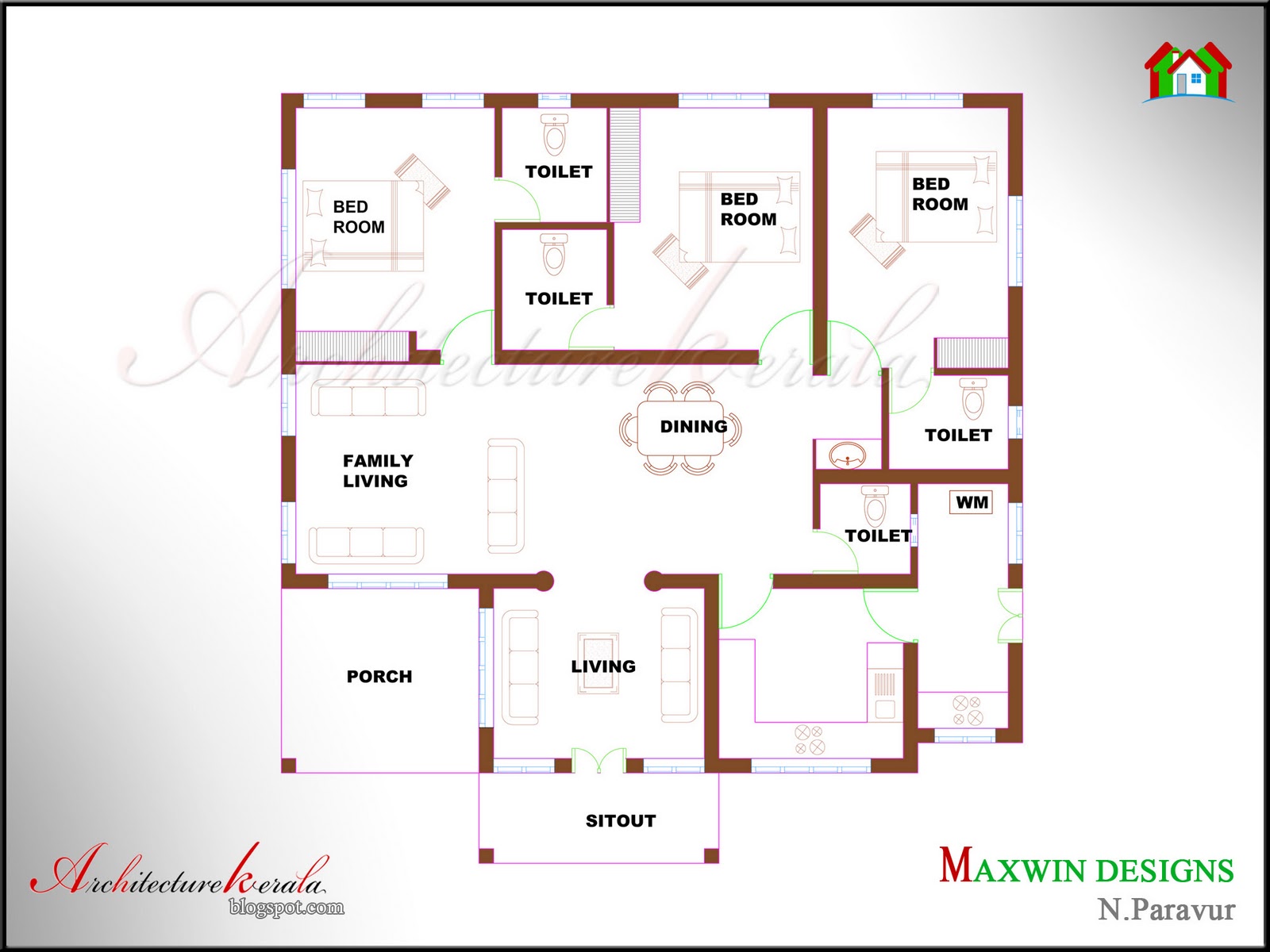Understanding the Basics of Indian House Plans: 4 Bedroom Indian House Plans

Indian homes, known for their unique blend of tradition and modernity, showcase a rich architectural heritage. From the intricate details of Mughal architecture to the minimalist aesthetics of contemporary designs, Indian house plans reflect the country’s diverse cultural landscape.
Architectural Styles and Design Principles
Indian homes are characterized by a variety of architectural styles, each with its distinct features and influences.
- Traditional Indian Architecture: This style, deeply rooted in ancient Indian traditions, emphasizes the use of natural materials like wood, stone, and terracotta. It features intricate carvings, ornate columns, and vaulted ceilings, often incorporating elements of Hindu and Buddhist religious architecture. Examples include the majestic palaces of Rajasthan and the ancient temples of South India.
- Mughal Architecture: Introduced during the Mughal Empire, this style is known for its grand scale, symmetry, and intricate geometric patterns. Mughal architecture often features domes, arches, and courtyards, creating a sense of grandeur and elegance. The Taj Mahal, a UNESCO World Heritage Site, is a prime example of Mughal architectural brilliance.
- Colonial Architecture: Influenced by the British colonial period, this style incorporates elements of Victorian and Gothic architecture. It features large windows, high ceilings, and a focus on functionality and practicality. Colonial bungalows are commonly found in hill stations and coastal towns across India.
- Contemporary Architecture: Modern Indian homes often embrace minimalist designs, clean lines, and open spaces. They incorporate modern materials like glass, steel, and concrete, while still respecting traditional principles of light, ventilation, and privacy. Contemporary architecture emphasizes functionality and sustainability, reflecting the changing needs and aspirations of modern Indian families.
Incorporating Traditional Elements, 4 bedroom indian house plans
Courtyards, verandahs, and balconies are integral components of traditional Indian homes, offering a harmonious blend of functionality and aesthetics.
- Courtyards: Courtyards act as a central gathering space, providing natural light and ventilation to the house. They are often used for family gatherings, religious ceremonies, and daily activities. The courtyard creates a sense of openness and connection with nature, bringing a calming and serene atmosphere to the home.
- Verandahs: Verandahs, covered outdoor spaces, offer respite from the sun and rain, providing a shaded area for relaxation and socializing. They are often used for morning tea, evening gatherings, and enjoying the fresh air. Verandahs add a touch of elegance and create a seamless transition between the interior and exterior spaces.
- Balconies: Balconies provide a private space for enjoying the outdoors, offering panoramic views and a sense of tranquility. They are often used for gardening, stargazing, or simply enjoying a cup of coffee while taking in the surroundings. Balconies enhance the visual appeal of the house and create a sense of openness and connection with the environment.
Cultural Significance of Room Layouts and Spatial Arrangements
The layout and spatial arrangement of rooms in Indian homes are deeply rooted in cultural beliefs and traditions.
- The Importance of Privacy: Indian homes are designed with a strong emphasis on privacy, particularly for women and elders. Separate rooms are often allocated for family members, with distinct spaces for guests and family gatherings. This ensures a sense of comfort and security within the home.
- The Significance of the Puja Room: In many Indian homes, a dedicated space is set aside for religious practices and rituals. The puja room, often located in a quiet and secluded corner of the house, serves as a place for prayer, meditation, and connecting with spiritual beliefs. This space is considered sacred and is treated with utmost respect.
- The Role of the Kitchen: The kitchen is often considered the heart of the Indian home, where family members gather for meals and share stories. It is a space for nurturing, creativity, and expressing love through food. The kitchen layout is carefully planned to ensure efficiency and convenience, reflecting the importance of cooking and food in Indian culture.
Designing a Functional and Spacious 4-Bedroom Layout

Creating a comfortable and functional 4-bedroom house plan requires careful consideration of space utilization, flow, and individual needs. The layout should maximize functionality, optimize natural light and ventilation, and provide adequate privacy for each family member.
Sample Floor Plan for a 4-Bedroom Indian House
This sample floor plan offers a functional and spacious layout for a 4-bedroom Indian house. It prioritizes natural light, ventilation, and privacy while catering to the needs of a modern family.
Living Area:
* The living room is positioned at the front of the house, offering a welcoming space for family gatherings and entertaining guests.
* Large windows allow ample natural light to illuminate the space.
* A separate TV area within the living room provides a dedicated space for relaxation and entertainment.
Dining Area:
* The dining area is conveniently located adjacent to the kitchen, facilitating easy serving and movement between the two spaces.
* A spacious dining table accommodates the entire family and guests.
* The dining area is positioned to offer a view of the garden, creating a pleasant ambiance for meals.
Kitchen:
* The kitchen is designed for functionality and efficiency, with ample counter space and storage.
* A separate pantry provides additional storage for groceries and kitchen essentials.
* A large window provides natural light and ventilation, making the kitchen a bright and airy space.
Bedrooms:
* The master bedroom is located on the opposite side of the house from the living room, ensuring privacy and quiet.
* The master bedroom features an ensuite bathroom and a walk-in closet, providing ample space for personal belongings.
* The remaining bedrooms are located on the same floor, with each room featuring a dedicated closet and natural light.
* One bedroom can be designed as a guest room, featuring a comfortable bed, a writing desk, and a built-in wardrobe.
Other Essential Spaces:
* A separate laundry room is included for convenience and to prevent clutter in other areas.
* A home office or study room provides a dedicated space for work or study.
* A puja room is included for religious practices and rituals.
* A covered balcony or patio offers an outdoor space for relaxation and enjoyment.
Optimizing Natural Light and Ventilation:
* Large windows are strategically placed in each room to maximize natural light and ventilation.
* A combination of windows and doors creates a cross-ventilation effect, ensuring fresh air circulation throughout the house.
* The placement of windows is designed to provide views of the garden and surrounding areas.
Privacy and Functionality:
* The bedrooms are strategically located on the opposite side of the house from the living room and other common areas, ensuring privacy.
* The layout is designed to create distinct zones for different activities, promoting a sense of order and functionality.
Example:
Consider a family with two parents, a teenage daughter, and a younger son. The master bedroom would be for the parents, while the daughter’s bedroom would be located near the home office for quiet study time. The younger son’s room could be near the play area, providing him with a space to play and learn.
This sample floor plan serves as a starting point for designing a functional and spacious 4-bedroom Indian house. By carefully considering the needs and preferences of each family member, you can create a layout that meets their individual requirements and fosters a harmonious living environment.
Considerations for Building Materials and Aesthetics

Choosing the right building materials and aesthetics is crucial for creating a beautiful and functional Indian home. This section will explore the advantages and disadvantages of various building materials, delve into popular color palettes and decorative elements, and showcase traditional and modern Indian design styles.
Building Materials
The choice of building materials significantly impacts a home’s durability, cost-effectiveness, and aesthetic appeal. Here’s a breakdown of common materials used in Indian homes:
- Concrete: Concrete is a versatile and durable material widely used in India. It is cost-effective, fire-resistant, and can be molded into various shapes. However, concrete structures can be susceptible to cracking and require proper maintenance.
- Brick: Bricks are another popular building material known for their durability and affordability. They offer good insulation and are aesthetically pleasing. However, brickwork requires skilled labor and can be time-consuming.
- Stone: Stone, particularly sandstone and granite, is a luxurious and durable building material. It adds a touch of elegance and can withstand harsh weather conditions. However, stone is expensive and requires specialized handling and installation.
- Wood: Wood is often used for doors, windows, and interior finishes. It provides warmth, natural beauty, and excellent insulation. However, wood is susceptible to termites and requires regular maintenance.
- Steel: Steel is increasingly used in modern Indian homes for structural support, roofing, and window frames. It is strong, durable, and fire-resistant. However, steel can be prone to corrosion and may require protective coatings.
Color Palettes and Decorative Elements
Indian homes are known for their vibrant color palettes and intricate decorative elements.
- Color Palettes: Popular colors include warm hues like terracotta, ochre, and turmeric yellow, often combined with cool tones like blue, green, and white. These colors evoke a sense of warmth, vibrancy, and cultural richness.
- Decorative Elements: Traditional Indian homes feature elaborate carvings, intricate jali work, and vibrant murals. These elements add a touch of artistry and cultural heritage to the home. Modern Indian homes often incorporate minimalist designs with geometric patterns and contemporary art pieces.
Traditional and Modern Indian Design Styles
Indian architecture boasts a rich history, with diverse styles reflecting regional influences and cultural traditions.
- Traditional Indian Styles:
- Rajasthani: Characterized by intricate carvings, jali work, and vibrant colors. Examples include the Hawa Mahal in Jaipur and the City Palace in Udaipur.
- Mughal: Known for its grandeur, symmetry, and use of red sandstone. The Taj Mahal is a prime example of Mughal architecture.
- South Indian: Features intricate temple architecture, ornate carvings, and a focus on natural materials like wood and stone. The Brihadeeswarar Temple in Thanjavur is a notable example.
- Modern Indian Styles:
- Contemporary: Emphasizes clean lines, minimalist designs, and the use of modern materials like glass and steel. Often incorporates elements of traditional Indian architecture in a contemporary context.
- Fusion: Blends traditional Indian elements with modern design principles. This style incorporates vibrant colors, intricate patterns, and natural materials in a contemporary setting.
